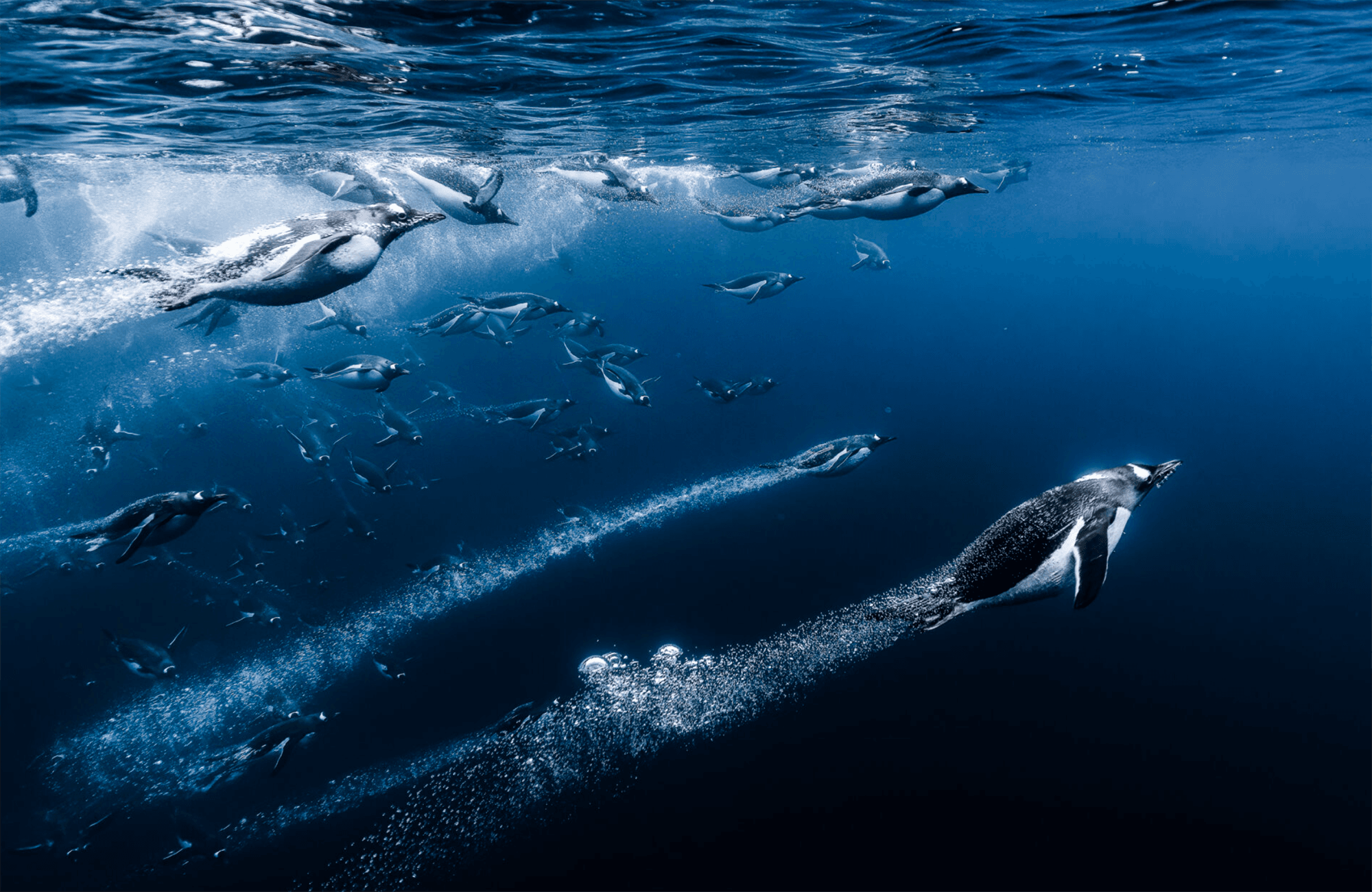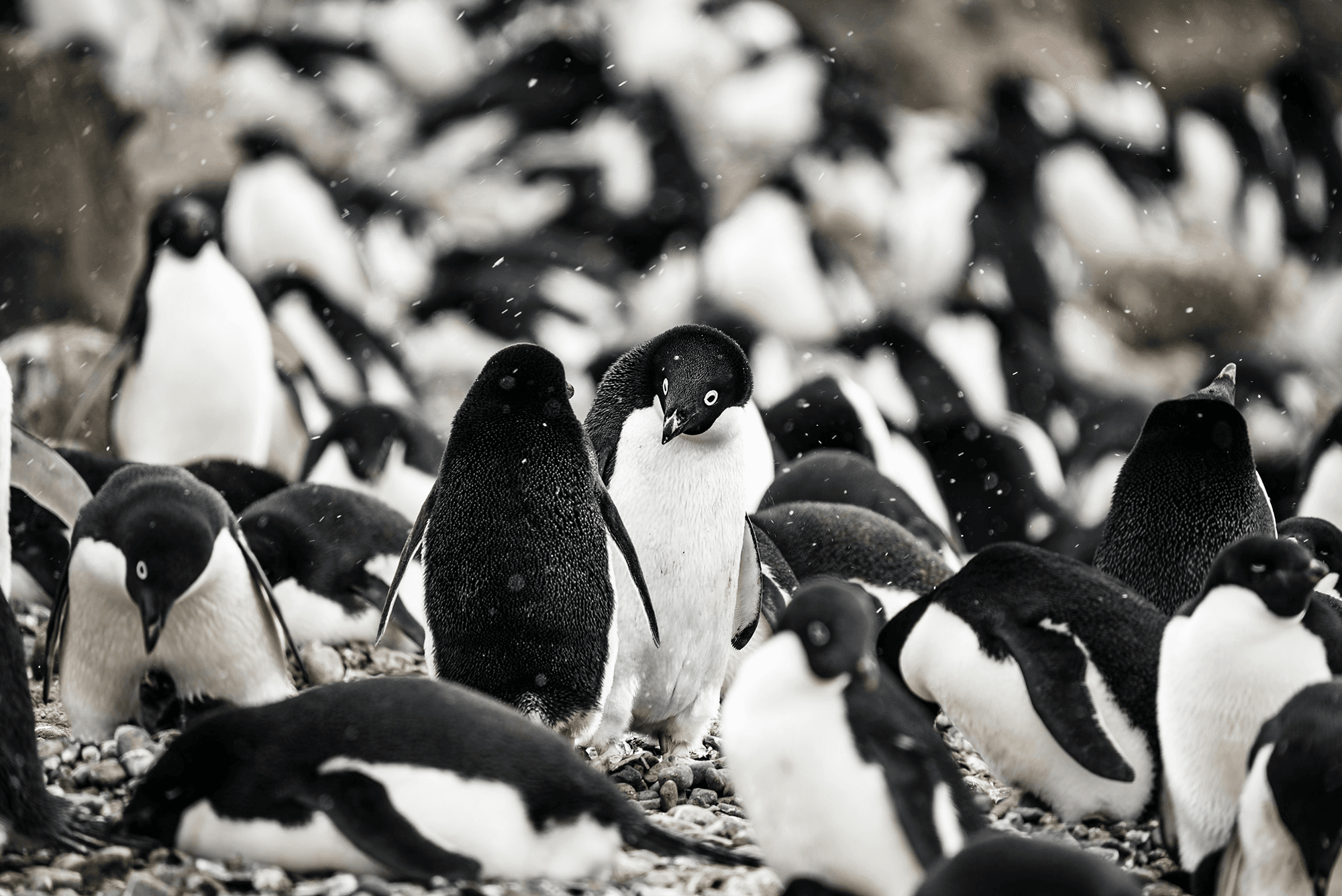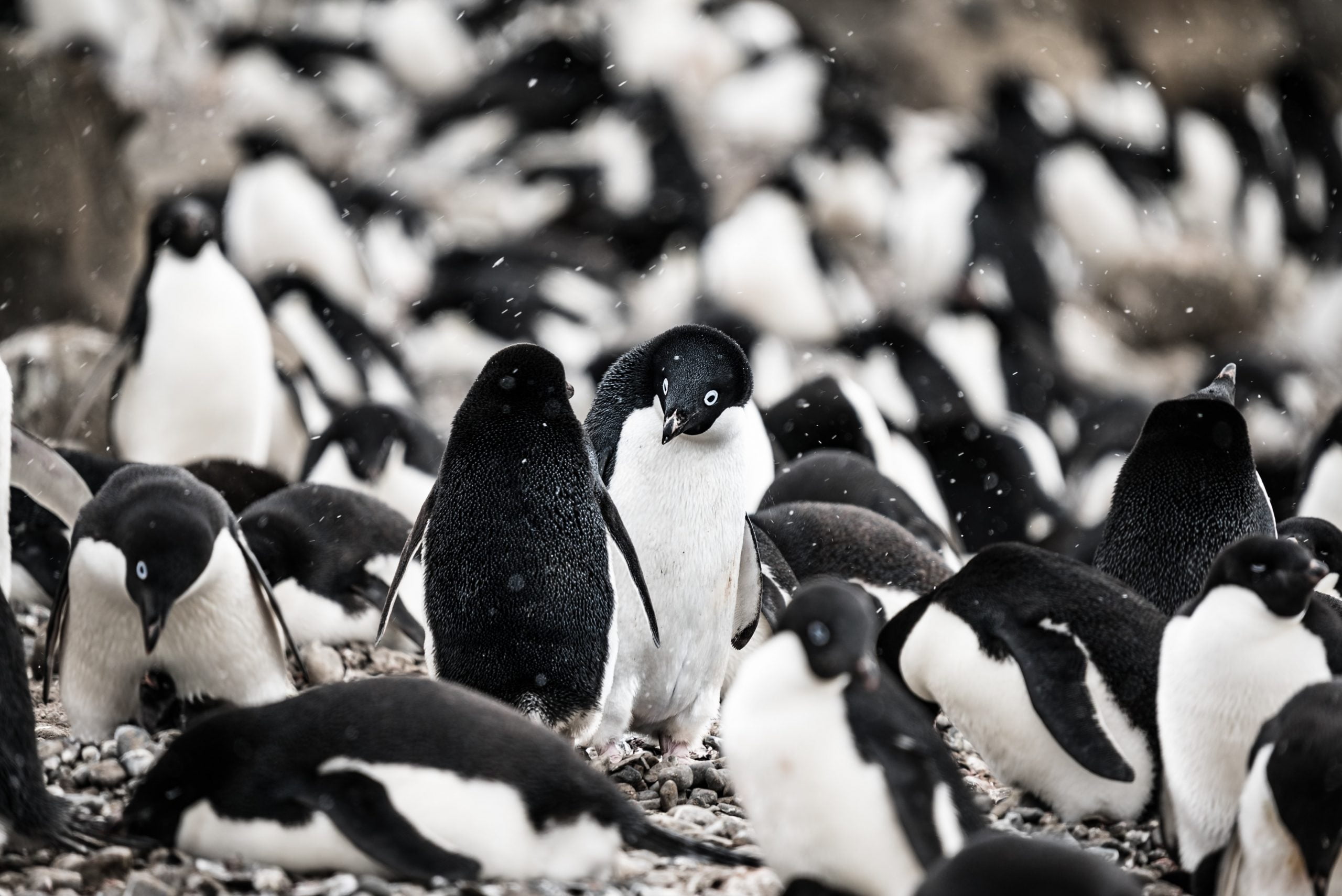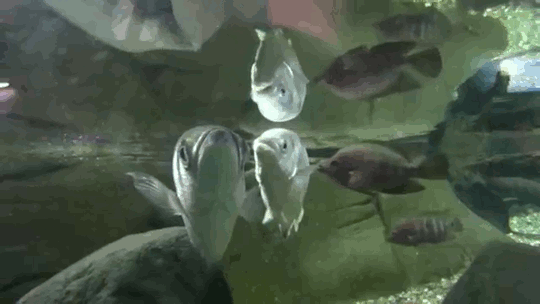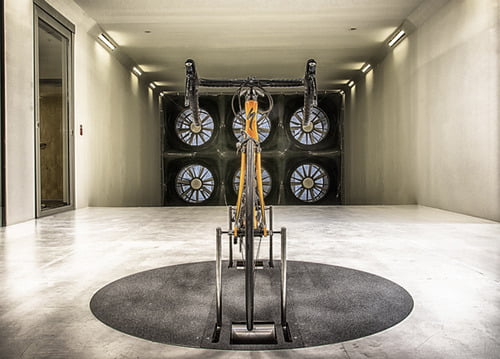If you’re used to seeing penguins on land, their speed and grace in the water can surprise. Penguins are even capable of extra bursts of speed through supercavitation. They trap air beneath their feathers and then release it underwater when they need to move faster. Their coating of bubbles reduces their drag and gives them the extra speed to help escape predators like leopard seals. (Image credit: R. Barats/OPOTY; via Colossal)
Tag: penguins

Penguin Poo Seeds Antarctic Clouds
Forming clouds requires more than just water vapor; every droplet in a cloud forms around a tiny aerosol particle that serves as a seed that vapor can condense onto. Without these aerosols, there are no clouds. In most regions of the world, aerosols are plentiful — produced by vegetation, dust, sea salt, and other sources. But in the Antarctic, aerosol sources are few. But a new study shows that penguins help create aerosols with their feces.
Penguin feces is ammonia-rich, and that ammonia, when combined with sulfur compounds from marine phytoplankton, triggers chemistry that releases new aerosol particles. The researchers measured ammonia carried on the wind from nearby penguin colonies and found that the birds are a large ammonia source, producing 100 to 1000 times the region’s baseline ammonia levels. In combination with another ingredient in penguin guano, the researchers found the penguins boosted aerosol production 10,000-fold. That means penguins can actually influence their environment, helping to create clouds that keep Antarctica cooler. (Image credit: H. Neufeld; research credit: M. Boyer et al.; via Eos)

“Surfing on the Other Side”
Surfers come in many forms — humans, robots, birds, and even honeybees. Most of the time, though, we see surfers above the water. In this award-winning photo, on the other hand, the surfing penguin shoots by beneath the water, riding beneath the wave’s crest. Keeping pace with the breaking wave should be no trouble for a penguin. They waddle awkwardly on land, but they have incredible speed in the water. Years ago, a penguin streaked past me in the water like a rocket to my paper airplane. (Image credit: L. Fitze/BPOTY)

The Power of a Penguin’s Rectum
When brooding their eggs, penguins can rarely leave the nest, but answering nature’s call is still necessary. To keep the nest clean, Adélie penguins project their feces up to more than a meter away. A new study refines previous calculations on this subject and finds that the penguin’s rectum develops far higher pressures than that of humans.
In one hypothetical calculation, the authors estimate that a human of average height, capable of developing penguin-like rectal pressures, would project excrement more than 3 meters. In the authors’ words, “He/she should not use usual rest rooms.”
Knowing the likely range of contact for penguins is important primarily for zookeepers, who understandably would like to avoid such projectiles. (Image credit: H. Neufeld; research credit: H. Tajima and F. Fujisawa; via phys.org)

Choosing Swimming Over Flight
When studying modern birds it quickly becomes apparent that they can either be good at swimming or at flying, but not at both. The characteristics that make wings good for flying are diametrically opposed to those that make for a good swimmer. So most species have chosen to invest in one strategy or the other. Penguin ancestors chose the swimming route tens of millions of years ago, in the aftermath of the extinction event that emptied our oceans of the large reptilian predators that had ruled them during the age of the dinosaurs. This video explores what we know about the fossil record of these birds, and it’s pretty incredible. Did you know there used to be 2-meter-tall penguins? (Image and video credit: PBS Eons)

Fish, Feathers, and Phlegm
Inside Science has a new documentary all about fluid dynamics! It features interviews with five researchers about current work ranging from the physics of surfing to the spreading of diseases. Penguins, sharks, archer fish, 3D printing, and influenza all make an appearance (seriously, fluid dynamics has everything, guys). If you’d like to learn more about some of these topics, I’ve touched on several of them before, including icing, penguin physics, shark skin, archer fish, and disease transmission via droplets. (Video credit: Inside Science/AIP)



Huddling Penguins and Traffic Jams
Male emperor penguins have the unenviable task of incubating their eggs in temperatures as cold as -50 deg Celsius and winds of up to 200 km/h. To stay warm, the penguins form huddles of up to thousands of individuals. Observations in the wild show that these huddles move in a stop-and-go fashion, with changes propagating through the penguins like waves. Researchers adapted a model used for heavy traffic flow to describe the penguins’ motion. They found that motions like those found in observed penguin huddles could be initiated by slight movements of any penguin in the model huddle, regardless of its position; in other words, the huddle has no leader. They also found that the wave that travels through the penguins can align the huddle to uniform density or help two huddles merge. To learn more, check out the researchers’ video or their paper. (Video credit: D. Zitterbart et al./New Scientist; via J. Ouellette)

Penguins Can Be Colder Than Their Surroundings
Thermal imaging of emperor penguins in Antarctica shows that, in still conditions, large portions of their bodies remain colder than ambient temperatures. In the image above, the heads, beaks, eyes, and flippers of this pair of penguin are the warmest while much of their feathered surface remains several degrees colder than the temperature around them. Not only does this indicate that the penguins’ skin and feathers are extremely effective insulators–the core temperature of each penguin is roughly the same as a human’s–but it means that the penguins are losing heat via radiative cooling toward the sky, the same way your car does when frost forms. The measurements in the study are for penguins at least one body length away from any other penguins; of course penguins typically huddle together to generate additional warmth. The mathematics of this behavior are under active research. (Photo credit: D. McCafferty et al.; via Wired)
Supercavitating Penguins
[original media no longer available]
Penguins, already fluid dynamicists by nature, have developed clever methods of increasing their speed to escape from the leopard seals that prey on them. In the clip above, notice from 1:55 onward as the penguins swim for the surface and leap onto the ice – they leave a trail of bubbles in their wake. The penguins are using supercavitation to decrease their drag. When the penguins first dive in to the water, they splay their feathers out in the air and then lock them closed in the water, trapping pockets of air beneath them. When the need for a burst of speed arises, the penguin shifts its feathers to release the air, coating most of its body in a layer of bubbles. Because the drag in air is much less than the drag in water, this enables the bird to achieve much higher speeds than they normally do when swimming.
